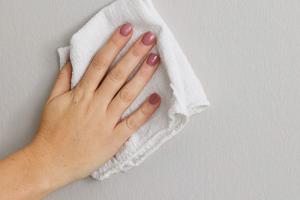Mastering the Art of Hanging Pictures on Plaster Walls: A Comprehensive Guide

-
Quick Links:
- Introduction
- Understanding Plaster Walls
- Essential Tools and Materials
- Preparation Steps
- Techniques for Hanging Pictures
- Common Mistakes to Avoid
- Case Studies and Real-World Examples
- Expert Insights
- FAQs
Introduction
Hanging pictures on plaster walls can be a daunting task for homeowners and renters alike. Unlike drywall, plaster requires specific techniques and tools to ensure that your artwork is displayed beautifully and securely. In this comprehensive guide, we will explore the ins and outs of hanging pictures on plaster walls, covering everything from the necessary tools to step-by-step instructions for a professional finish.
Understanding Plaster Walls
Plaster walls are commonly found in older homes and are appreciated for their durability and aesthetic appeal. Unlike modern drywall, plaster is a mixture of lime, water, and sand applied in layers. Understanding the structure of plaster walls is crucial for selecting the right hanging methods.
Types of Plaster Walls
- Traditional Plaster: A three-coat system consisting of a scratch coat, brown coat, and finish coat.
- Gypsum Plaster: A modern alternative that is easier to work with.
- Venetian Plaster: A decorative finishing technique that creates a unique look.
Benefits of Plaster Walls
- Durability and longevity
- Sound insulation
- Fire resistance
Essential Tools and Materials
Before you start hanging your pictures, gather the necessary tools and materials:
- Measuring tape
- Pencil
- Level
- Drill with masonry bits
- Picture hooks or wall anchors
- Hammer
- Stud finder
- Wall repair kit (for potential damage)
Preparation Steps
Proper preparation is key to a successful picture hanging project:
- Select the Right Location: Choose a spot that complements your room's layout and lighting.
- Measure and Mark: Use a measuring tape to determine the height at which you want to hang your picture, typically at eye level.
- Find the Studs: Use a stud finder to locate studs in your plaster wall for secure hanging.
Techniques for Hanging Pictures
Depending on the size and weight of your artwork, different techniques can be used to hang pictures on plaster walls.
Lightweight Pictures
For lightweight pictures, adhesive strips can be a great option:
- Choose adhesive strips rated for the weight of your picture.
- Clean the wall surface before applying the strips.
- Follow the manufacturer’s instructions for application.
Medium to Heavy Pictures
For medium to heavy pictures, use wall anchors or hooks:
- Drill a hole into the plaster using a masonry bit.
- Insert a wall anchor for added support.
- Attach the picture hook or screw into the anchor.
Gallery Walls
Creating a gallery wall can add personality to your space:
- Layout your pictures on the floor before committing to the wall.
- Consider using painter's tape to visualize the arrangement on the wall.
- Use a mix of sizes and frames for an eclectic look.
Common Mistakes to Avoid
To achieve the best results, avoid these common pitfalls:
- Hanging pictures too high or too low.
- Neglecting to use wall anchors for heavy frames.
- Not measuring before drilling.
Case Studies and Real-World Examples
In this section, we will explore real-world scenarios illustrating effective picture hanging techniques:
Case Study 1: The Living Room Gallery Wall
A homeowner transformed their living room by creating a gallery wall of family photos. By using a combination of adhesive strips and wall anchors, they managed to hang over 15 frames without damaging the plaster.
Case Study 2: The Heavy Artwork Dilemma
After purchasing a large canvas, a homeowner found it challenging to hang it securely. They consulted with a professional who recommended using a heavy-duty wall anchor, leading to a successful installation.
Expert Insights
We consulted with interior designers and home improvement experts for their top tips:
- Consistency is Key: Ensure frames are of similar color and style for a cohesive look.
- Lighting Matters: Consider the light source when choosing where to hang pictures.
FAQs
- Can I use nails to hang pictures on plaster?
Yes, but it's recommended to use wall anchors for heavier frames to prevent damage.
- How do I know if my plaster wall can support weight?
Use a stud finder to locate studs, and opt for wall anchors for added security.
- What is the best height to hang pictures?
Generally, pictures should be hung at eye level, around 57 to 60 inches from the floor.
- Is it possible to remove hooks without damaging the wall?
Yes, use a wall repair kit to fill any holes left from hooks or nails.
- Can I hang pictures in a bathroom with plaster walls?
Yes, but ensure to use moisture-resistant materials and hooks.
- How do I hang multiple pictures in a straight line?
Use a measuring tape to mark the spots and a level to ensure they align properly.
- What if I want to rearrange my pictures later?
Consider using removable adhesive strips for easy repositioning.
- Is there a special technique for hanging heavy art?
Yes, use multiple anchors or a picture rail for larger pieces.
- What type of hook is best for plaster?
Heavy-duty picture hooks or toggle bolts work best for plaster walls.
- Can I paint over the patched areas?
Yes, once the patch is dry, you can paint to match the rest of the wall.
Random Reads